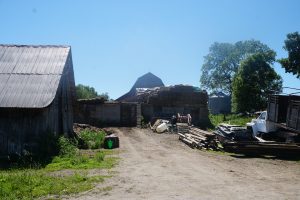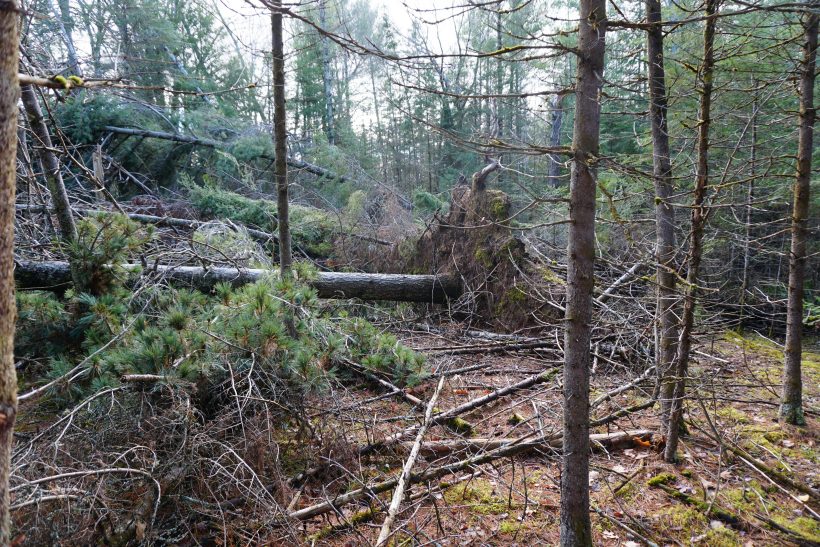On May 21, 2022, a major wind storm, known as a derecho, laid waste the bushlands across southern Ontario running north of and parallel to Highway 7 felling trees like falling dominoes. The devastation impacted Marmora, The Ridge Road near Coe Hill and Limerick Township. Hydro crews were pressed into service. It took weeks in some cases to restore hydroelectric power to consumers. Logging crews worked long hours for weeks cleaning up roadways and private drives harvesting good logs where possible. Depots were created near Jordan Lake, at the Limerick municipal offices, at the Wollaston municipal office location and Marmora as well. Provincial government funding assisted in the cost of hiring companies such as Eco Mulch (Check this environmentally friendly company out on the internet.) to turn the timber and such debris at these locations into mulch. One week later a tornado tore through Marmora. In fact a pick up truck was literally picked up and deposited in a nearby field.
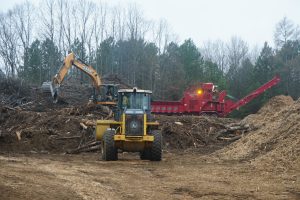
“Derecho” is a Spanish word meaning “direct” or “straight ahead.” Hinrichs coined it to distinguish straight-line wind damage from that produced by tornadoes. Derechos are fast-moving bands of thunderstorms with destructive winds. The winds can be as strong as those found in hurricanes or even tornadoes! Derechos can pack lethal gusts in excess of 100 mph – hurricane strength.
The occurrence of derechos is divided into two seasons; the “warm” season which is May, June, July and August. 70% of all derechos occur during these four months. Armed with 10 years of severe weather and climate change research since the 2012 derecho, scientists now say rising temperatures could well increase the fuel for these violent storms — making them stronger, more extensive and longer-lived — while shifting when and where they occur. A derecho is a very long lived and damaging thunderstorm. A storm is classified as a derecho if wind damage swath extends more than 250 miles and has wind gusts of at least 58 mph (93.3 kph) or greater along most of the length of the storm’s path. Derechos can occur at any time of the year but are more common when a clash of air masses happens during the spring and summer. The damaging-wind events vary in size, but it is not uncommon for winds to exceed more than 100 mph and produce tornado-like destruction for several hundred miles. Derechos are notoriously difficult to forecast. The conditions that led to such a storm actually occur several times a year. However, only about once in a decade a storm like this actually forms. Knowing what day could be the big one is impossible to know with the tools at our disposal to-day. The derecho, also called a land hurricane, is a windstorm travelling in a straight line characterized by gusts in excess of 93 km (58 miles) per hour and the production of a swath of wind-generated damage along a front spanning more than 400 km (250 miles) in length.
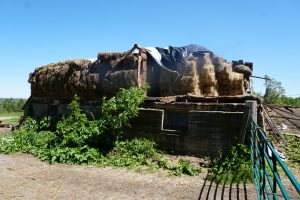
Anecdotally
Farmer friend Layne Moore of The Ridge was in the bush when all went quiet. He noticed debris – leaves, twigs and such – swirling in the air. Suddenly trees around him began falling and “all hell broke loose.” Initially Layne considered crawling under a downed tree for protection but quickly realized that should another tree fall on top of ‘that’ tree he could be trapped never to be found. And so Layne carefully made his way home. He said the storm lasted about ten minutes.
Upon his arrival Layne was shocked to see that one of his big barns was gone. Of interest, another barn standing before the missing barn stood intact, unscathed. If a derecho is a “land hurricane” why wasn’t it impacted as well?
My son was at his camp near Carleton Place and had just managed to enter his cabin when the storm struck. His friend was caught in the middle of a large field. They both watched as trees were felled like dominoes. It took them six hours of chain sawing and hard work to clear a path out to the main road.
Our deer camp is located near The Ridge. My friend Jim’s ‘sugar shack’ where they made maple syrup was totally destroyed. During deer season as I walked the bush my mouth must have been aghast much of the time as I surveyed the damage. Needless to say our trails were dramatically altered. Such an impact of the habitat of course affected all wildlife. On one occasion, as I prepared my camera to film some downed trees, I suddenly saw a white-tail jump vertically as a deer, mere metres away but hidden by the downed trees bounced away. Shortly thereafter I heard the deer ‘snorting’ at me apparently annoyed that I had disturbed it.
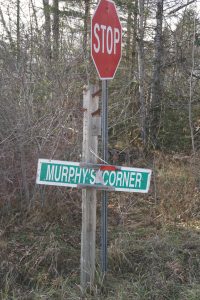
I took a drive along the Old Hastings Road between Murphy’s Corners and Ormsby taking more photos of the inflicted damage. I don’t imagine that the Hopeful Hunt Camp had this in mind when it started in 1957. The Ridge United church avoided a direct hit but the cemetery didn’t, as seen in the a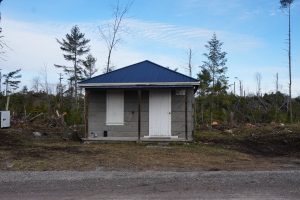 c
c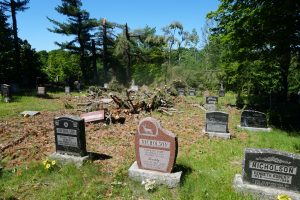
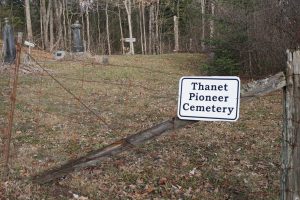 c
c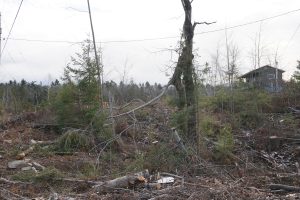
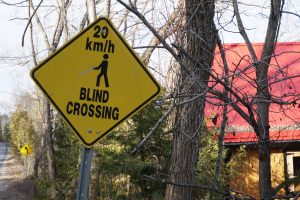
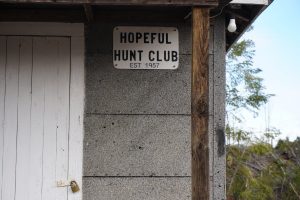 o
o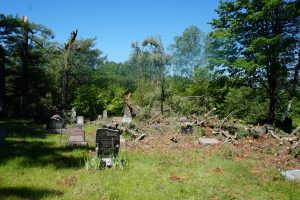
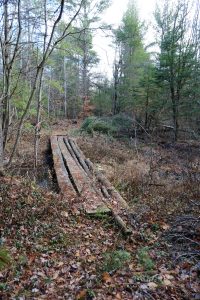 m
m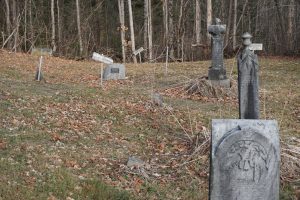 pa
pa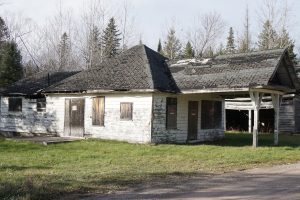
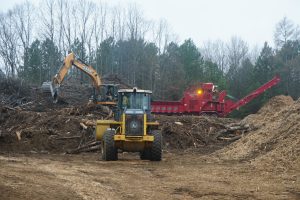
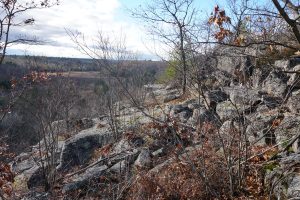 nying photos.
nying photos.
